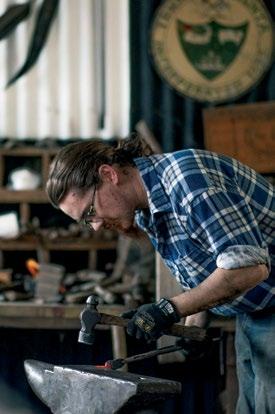Cape Jaffa Lighthouse




On Sunday 21 May, I had the enjoyable experience of participating in the National Trust’s annual walk along the Pioneer Women’s Trail, together with nearly a thousand other people from a wide range of backgrounds, and a mixture of ages and experience. The 26-kilometre Pioneer Women’s Trail Walk from Hahndorf to Beaumont follows the route taken by pioneer women (of largely Germanic extraction), who walked weekly from rural properties in and around Hahndorf to Adelaide so they could deliver their farm produce to city markets.
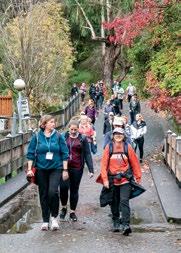



The trail taken by these strong and determined women largely followed ancient routes used by First Nations peoples to move back and forth between the hills and plains. The walk passes through hills towns, farmland and some beautiful bushland; as you get closer to Beaumont, it also provides magnificent views of the Adelaide metropolitan area. Once the pioneer women had delivered their produce, they turned around and walked back to Hahndorf carrying products needed at home, which did at times include bricks!
Many participants in the National Trust event, like myself, appreciated the post-walk selection of excellent food, refreshments and entertainment available in the fair-like setting of Beaumont House’s beautiful gardens. I doubt that the pioneer women would have had such a pleasurable time at the conclusion of their journey, nor the relaxing benefits of a warm Radox bath upon returning home.
The National Trust has held the annual Pioneer Women’s Trail Walk since 2009 and it is one of our most successful events. A team of dedicated and hardworking volunteers put in considerable effort behind the scenes to organise it, and I would like to publicly acknowledge them and their work, and thank them for supporting the National Trust. The event is certainly very popular, as evidenced by the many walkers who return each year to repeat the journey.
The walk is a salient reminder that South Australia’s heritage is found not only in its buildings and places but also in traditions and customs, and through experiencing things from the past. Walking a trail previously walked by pioneer women and, before them, local First Nations groups, hopefully helps us to develop a better understanding and appreciation of the factors that influence South Australian society today. The National Trust is interested in exploring the development and promotion of other heritage trails in South Australia, that might enable greater numbers of people to experience other aspects of our State’s heritage.





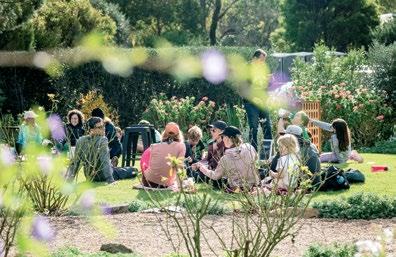



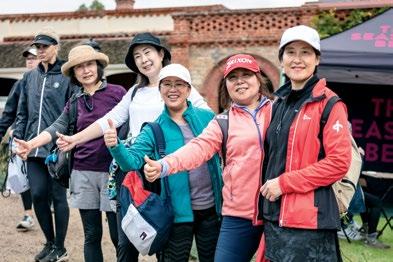

One of Australia’s most treasured heritage railways is about to reach an important milestone. July 2023 will mark 50 years since the Pichi Richi Railway Preservation Society was formed to save the first section of what later became The Ghan line to the Northern Territory.


Anew railway opened in 1879, connecting Port Augusta and Quorn via the Pichi Richi Pass. It was intended to be the first stage of a scheme that would eventually link Port Augusta to Darwin, however it took another 50 years for the narrow-gauge line to reach only as far as Alice Springs. By then Quorn and the Pichi Richi railway were already part of what became the TransAustralian Railway, crossing the Nullarbor Plain to Kalgoorlie. For almost 70 years, trains using the Pichi Richi line hauled people, coal, troops, livestock, minerals and agricultural products. But the line was closed to regular traffic in 1957, after a new standard gauge track was laid from Stirling North to Brachina and on to Maree. By the early 1970s, the infrastructure was falling into disrepair. Spurred by a rumour that the Commonwealth Railways intended to dispose of the track, local people as well as heritage and railway enthusiasts from further afield gathered at a public meeting in Port Augusta’s Cooinda Hall.
PICTURED
The meeting on 22 July 1973 voted to establish the Pichi Richi Railway Preservation Society (PRRPS), with the objectives of preserving the historic dry-stone walls and bridges along the original track. However, the society soon extended its ambitions, deciding to operate heritage trains using steam locomotives and rolling stock. Volunteers ran the first steam-powered train in July 1974, just 12 months after the society was formed.
Since then, the Pichi Richi Railway has become a significant tourist experience in the Flinders Ranges, attracting around 10,000 passengers a year. In 2021, it was named best tourist attraction in the annual South Australian Tourism Awards. The railway is operated entirely by volunteers, who are committed to conserving, restoring and maintaining the authentic heritage railway, which runs trains from March to November.
A unique experience scheduled just four times a year is a trip on the Coffee Pot, one of the most historic vehicles in the society’s collection. Built in England and known as Steam Motor Coach No. 1, the vehicle started service in 1906, making three trips a week to Port Augusta and one to Hawker, hauling a four-wheel van carrying parcels and mail. The steam motor spent its entire working life based at the Quorn Depot. It was nicknamed the Coffee Pot after railwaymen chalked the words ‘Coffee’ and ‘Cocoa’ on two water barrels that had been placed on the running boards to provide a spare water supply.
The vehicle was withdrawn from service in 1932 and kept under cover in the carpenters shop at Quorn until the depot was dismantled in the mid-1950s. In 1960 it was transferred to Alice Springs, where it was placed on static display, under the care of the National Trust (Northern Territory). In 1975, the National Trust relinquished control so the vehicle could be returned to Quorn. The last operating example of its type in the world, the Coffee Pot returned to service in 1984 following extensive restoration.
A registered charity, the society has relied on the generosity of donors and visitors since its formation half a century ago to help cover all costs associated with this extraordinary effort.
Two special events are planned to celebrate the Pichi Richi Railway Preservation Society’s 50th anniversary. On Saturday 22 July, a short movie will premiere as part of the spectacular award-winning Quorn Silo Light Show. The movie tells some of the history of the Pichi Richi Railway and the achievements of its volunteers. The free event is open to the public, with the light show beginning just after sunset.
Following the silo show an anniversary dinner will be held in the Quorn Town Hall for members and supporters. Three of the key lobbyists who helped form the society are no longer alive, however it is hoped the families of Reg Mayes (inaugural president), L. Quentin Smith (secretary) and Trevor Ward (treasurer) will attend.

Regular train services will also be running during the July school holidays, with the Pichi Richi Explorer scheduled to depart Quorn at 10am on Sunday 23 July, during the 50th anniversary weekend.

For more information about the society and the railway, visit pichirichirailway.org.au, or for information about the light show go to quornsilolightshow.info


The National Trust of South Australia and its counterpart in West Cornwall have commenced an exciting new partnership and exchange program that will benefit the preservation and interpretation of heritage mining sites at moonta and Burra.

The overall aim is to strengthen connections so the two organisations can share expertise in designing visitor experiences, conserving built heritage, and preserving and celebrating Cornish culture. The partnership also has significant potential to generate economic benefits for both regions. It will support the nomination of sites at Moonta and Burra for World Heritage listing, with an area covering almost 20,000 hectares of Cornwall and West Devon achieving similar status in 2006. The ultimate goal is to elevate the significance of Cornish mining sites globally and establish them as some of the world’s most important industrial heritage sites.
The exchange element of the project began in March when National Trust Regeneration Projects Officer James Guy travelled to Cornwall. His trip was in part funded by a grant provided by the International National Trusts Organisation (INTO), which promotes collaboration between National Trust organisations around the world. In the next stage, West Cornwall General Manager Ian Marsh will come to South Australia in September 2023. These visits are helping to establish stronger personal connections, and to identify the potential scope of the partnership and future collaborations. Meetings and site tours provide an opportunity to explore shared management issues; the potential to create physical and digital interpretation links; and learnings that might shape the Australian World Heritage bid, which is being developed jointly by the National Trust, the Regional Council of Goyder and the Copper Coast Council.
In a packed schedule during his exchange, James focussed on five
of the ten districts that make up the Cornwall and West Devon Mining Landscape World Heritage Site, starting with the rural mining district of Tregonning and Gwinear. It includes the Godolphin Estate at Helston, whose owners pioneered the use of steam power and gunpowder in some of the region’s richest mines.
Time spent in the Tamar Valley district highlighted the potential to create augmented reality experiences, which emerged as a major shared interest during the exchange. After a day exploring the Caradon mining district on Bodmin Moor, James also met Will Coleman, founder of Golden Tree Productions, a community interest company that masterminds projects celebrating Cornish language, heritage and identity.
In the coastal mining district of St Just, a visit to the Levant Mine highlighted the importance of honouring the stories of people and communities connected with mining. In 1919, an early type of lift, or man engine, used to convey miners to and from their underground work areas, suddenly collapsed, killing 31 men. The tragedy caused immense pain within the small community and still affects descendants today, with the Levant site holding a memorial service in 2019 to mark the centenary of the disaster. “Learning about this accident brought to light the true significance of these sites. It is essential to preserve their integrity, foster visitation, and honour those who have passed, contributed, and been involved in the story of these sites,” James said.
Another visit to Cornish Metals at South Crofty, in the industrialised mining district of Camborne and Redruth, highlighted how old and new mining technologies coexist on the same site, with mining dating back to 1592 and continuing today. James also explored the King Edward Mine at Camborne, finding that the interpretative work being done resonated strongly with
National Trust efforts at Moonta Mines to develop an integrated approach to presenting a variety of programs.


James said the visit confirmed that the two National Trusts shared similar challenges when it came to planning conservation work, prioritising limited resources and telling difficult stories.
“The importance of understanding the significance of sites outside Cornwall and how they fit with the wider story of the Cornish diaspora was a major interest point, along with telling the hardest to tell stories, and realising these involve narratives around displacement, industrial waste and the environment,” he said. “How do we approach these sites appropriately and not just platform the stories that make us feel good?”
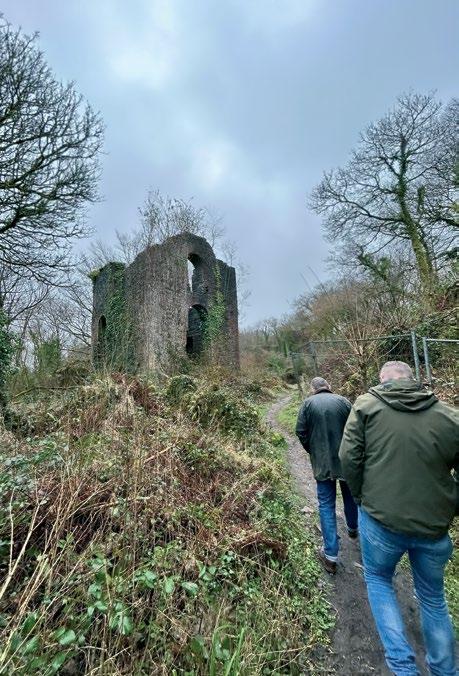
An appeal has been launched by the mount Barker Branch of the National Trust to help restore the burial place of one of South Australia’s most influential business pioneers and mount Barker’s greatest early benefactor.
John Dunn was already an experienced miller when he emigrated from Devon to South Australia with his family in 1840, at the age of 38. He harnessed this experience to operate mills across the colony, making John Dunn & Co the largest milling company in the Southern Hemisphere and a significant contributor to the South Australian economy. The family-run business even exported flour to the goldfields of California and the sugar plantations of Mauritius, as well as Britain and South Africa.

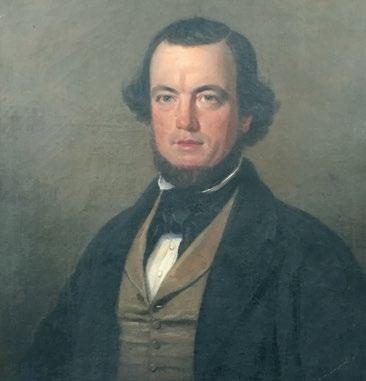
Initially, the Dunns settled in the Hay Valley near Nairne, where John built the first wind-powered mill in the colony in 1842. Two years later, he opened a steam-powered mill in Mount Barker, effectively putting the emerging town on the map. Flour milling became a foundation industry for the district, which was ideally situated between wheat growing areas and Adelaide markets. But it was Dunn’s philanthropy and commitment to his community that earned him the esteem and affection of his adopted town. He gave hundreds of pounds a year to charitable causes in Mount Barker, materially improving the life of its residents.
As early as 1851, Dunn helped quarry stone for the construction of the first Wesleyan chapel in Mann Street. In 1884, after he had made his fortune, he entirely funded its
handsome replacement, the Dunn Memorial Church (now the Dunn Memorial Uniting Church), organ and all, to the tune of some £4,000. In 1879, he paid for the construction of ten ‘Salem Cottages’ in Druids Avenue, providing accommodation for aged women and widows. In 1892, he gifted to the community Dunn Park – a recreational green space that is valued to this day.
As a member of parliament, Dunn also represented the interests of the district in South Australia’s House of Assembly for 11 years (1857-1868) and in the Legislative Council for eight years (1869-1877). Meanwhile, he maintained an interest in local affairs, serving regularly on the local council including two years as chairman.
Once Dunn had settled in Mount Barker in 1844, he never moved away. Some time around 1860, he built a family mansion, The Laurels, which is now part of a retirement village. After his first wife, Ann, died in 1870, he married again, this time to 39-year-old Jane Williams. The Williams family came from Dunn’s hometown of Bideford in Devon. Confusingly, Jane’s sister Elizabeth had married John Dunn junior 17 years before Jane and John Dunn senior took their vows.
Continued page 10

For the past eight years, the Mount Barker Branch of the National Trust has been working in collaboration with the Mount Barker District Council to secure the future of recreational land in the centre of the town.


The land includes what is now known as Dunn Oval (formerly Dunn Park), which was donated to the town by John Dunn in 1892 to mark his 90th birthday; and more than seven adjoining acres donated six years later by Dr Leonard Watkins Bickle, a former Mount Barker physician and surgeon. In 2017, the two parcels were consolidated in the Mount Barker District Council Development Plan as the Dunn Bickle Community Policy Area, which incorporates a caravan park and the town’s current public swimming pool, built by volunteers in the 1950s.
With a new swimming facility under construction at a different location and the pressure of development in the town, the National Trust branch believes it is more important than ever to protect the original vision of the two philanthropists to provide a ‘recreation-ground worthy of the town, attracting visitors and so proving a benefit to the place,’ and to remind residents of their legacy, which has been largely lost from memory.
Last year the branch received a community grant from the council to erect interpretive signage acknowledging the history of the land. Situated alongside the town’s popular linear trail, the new sign was officially unveiled in April by local Member of Parliament Dan Cregan and Mayor David Leach.

John Dunn died at The Laurels on 13 October 1894, at the age of 92. The local Courier summed up his significance to the town with the observation that he and Mount Barker were ‘so wrapped up in one another that it was difficult to think of one without the other.’ On the day of Dunn’s funeral, a special train brought mourners up from Adelaide, and more than 40 horsedrawn vehicles followed his hearse from his home to the Dunn Memorial Church, and then on to the Wesleyan cemetery (later the Mount Barker Cemetery). The newspaper reported:

Mount Barker has long been proud of the man who did so much to bring prosperity and fame to it, and practically all the inhabitants joined in the obsequies. Shops and offices were shut, flags flew at half mast, and tokens of mourning were universal. There was nothing pretentious about the funeral pageant, but the sincere and spontaneous manner in which everyone who could possibly make it convenient to do so left business engagements to follow the body to its grave spoke more clearly than any outward pomp could do of the respect and esteem in which Mr. Dunn was held.
Dunn was interred in the family crypt with the remains of Ann and their daughter, Eliza. The substantial monument that sits above the crypt was completed in August 1895. Carved in Italy from five tons of Sicilian white marble, it was commissioned through Hahndorf monumental mason Carl Bom, whose memorials can be seen throughout the cemetery. The simple but tasteful design features an urn surmounting a plain column resting on square marble tiers.
Unfortunately, the gravesite, which was once the focal point of the old cemetery precinct, has fallen into disrepair and is in urgent need of restoration. The Mount Barker Branch of the National Trust has launched an appeal to redress this situation as a tribute to John Dunn and in recognition of his substantial contribution to Mount Barker. The success of the project is entirely dependent on public donations.


AMount Barker resident of some 20 years, Julie Hockey is a fierce advocate for her local community and environmental conservation. While accepting that development is necessary, she believes strongly in the importance of maintaining tree canopy, biodiversity and green open spaces, and their impact on people’s quality of life.
“If we don’t have a healthy, natural environment with the right mix of biodiversity, then our health is negatively impacted. It’s well documented just how wonderful it is for your physical and mental health to go and sit outside, and listen to the birds or be immersed in wildlife or nature,” Julie said.
One of her recent acts of advocacy was nominating the winner of the 2023 South Australian Tree of the Year competition, run annually by 20 Metre Trees, a popular Facebook page established by tree advocate Tom Morrison. In a public vote, the tree dubbed Old Man Barker won by a sizable margin after being short-listed by a selection panel that included representatives of the National Trust, Trees for Life and Conservation SA.
Estimated to be about 300 years old and measuring more than seven metres in circumference at its base, the chosen river red gum (Eucalyptus camaldulensis) is located near the southern exit off the South Eastern Freeway at Mount Barker. It survived construction of the freeway in the 1970s but it is now at risk of being removed for proposed improvements to the freeway interchange.

In her nomination, Julie praised the tree for its character despite being relatively young for the species. “It has withstood the tests of time (storms, lightning strikes, humans) and as such is not the most pretty, well-formed tree, but as a result has many hollows supporting all sorts of native wildlife (possums, birds, bats, insects and reptiles),” she wrote.
“I am nominating ‘Old Man Barker’ because it is a character tree, iconic to the area and one of the last big river red gums in the immediate vicinity. Also, because it is under threat of being cut down at a time when we should be actively moving away from carcentric thinking and designing, and doing things which mitigate rising temperatures, loss of biodiversity and address climate change. To me it symbolises the past, present and future of our natural environment, along with the fight we are having to save our trees [from development] across the Mount Barker district.”
‘Old Man Barker’
more than 50 trees were nominated by the public for the 2023 South Australian Tree of the Year competition, with the title going to a gnarly river red gum in the Adelaide Hills, potentially under threat because of roadworks.

River red gums (Eucalyptus camaldulensis) proved popular with the public in the 2023 South Australian Tree of the Year competition, with specimens of the species taking out the top four placings. However, that doesn’t mean they are safe from development. The overall winner of the competition is at risk from proposals to improve the South Eastern Freeway interchange at Mount Barker. A river red gum at Brighton, which came runner-up, was cut down even while votes were still being counted. Another tree at Clapham, voted into fourth place, is still standing after the Mitcham Council rejected an application to remove it in 2022, encouraged by strong community support. Fortunately, according to the nominee, the final majestic example at Melrose remains standing in the middle of a road, with councils over the decades wisely deciding to work around it. This year’s judging panel selected a shortlist of 24 trees which was then put to the public vote. Here are some of those trees, in no particular order.
Stangate House, Aldgate
Circumference – 6 to 7 metres
Believed to be Australia’s second largest oak tree and South Australia’s largest, this beauty was planted in the mid-1800s. The extent of the canopy is truly awe-inspiring. It provides a beautifully cool refuge on a hot summer’s day, and is popular as a backdrop for wedding ceremonies. Pack a picnic to enjoy in the tree’s shade during a visit to historic Stangate House.
Wrattonbully
European settlers used to ringbark river red gums when clearing land for grazing and cropping, in an attempt to kill them. This glorious specimen still stands sentinel in a paddock in the State’s Limestone Coast region, determinedly alive despite being deformed by an axe. The nominator thought the tree looked like it needed a hug, before realising it was doing that itself, wrapping sapwood arms over the scar and around its own girth – ‘like an exoskeleton of resilience, holding itself with determination to survive against all odds!’
Kingston House, Kingston Park
Circumference – 7.19 metres
Standing strong with branches that resemble the legs of elephants, this beautiful kurrajong is a feature of the grounds surrounding one of the State’s oldest remaining houses, built in 1840.

‘Not only a visual spectacle, but also a wonder to listen to as the coastal breeze blows through the orchestra of leaves that rattle their charm,’ explained the person who nominated it.
Partridge House, Glenelg
Circumference – 4.29 metres
Tucked away in the grounds of historic Partridge House, this golden elm has become known as the ‘wedding tree’ because it is so popular with bridal couples for photo shoots on their special day. Light filtering through its canopy creates a space with a special golden glow.


Partridge House, Glenelg
Circumference – 22.40 metres!
Another outstanding specimen from Partridge House, this unique tree has 21 trunks, creating a combined circumference of more than 22 metres.
Estimated to be more than 120 years old, it is tucked away in the back corner of the garden. Native to South America, with herbaceous ancestors, the species is noted for having soft, rubbery trunks, lending to it being used in the art of bonsai.
Brewery Street, Melrose
Voted into third place, this beautiful tree at Melrose was described by the person who nominated it as ‘a South Australian icon’. Estimated to be around 300 years old, it is much loved by the community and travellers alike. Successive generations have appreciated the local council’s foresight, building the road around it and then leaving it there.
McLaren Vale
Circumference – more than 15 metres
This outstanding tree is listed on the National Trust Significant Tree Register and a local landmark at McLaren Vale where it stands behind the historic McLaren Hotel, near the western boundary of Hardys Tintara winery.





A gift from the Adelaide Botanic Gardens, it was planted around 1868. The person who nominated it loved to play among the buttress roots of similar specimens as a child, and is a regular visitor to McLaren Vale, where his daughter and niece now enjoy a similar experience.
8 EUCALYPTUS MICROCARPA (GREY BOX)
Corner of Adelaide Terrace and Western Avenue, Pasadena
This remnant grey box is an increasingly rare example of a species once endemic to the Adelaide foothills and the sometimes dense woodland that used to dominate the south-eastern Adelaide plains. Nicknamed the Larrikin Tree, it has a dark and shaggy bark, massive trunk, and is gnarled with many broken limbs and hollows that provide habitat, and a shady canopy that emphasises breadth rather than height.
9 EUCALYPTUS CAMALDULENSIS (RIVER RED GUM)
Brighton Road, Somerton Park
Circumference – 4.3 metres
‘They paved paradise and put up a parking lot’ is a suitable slogan to capture the unfortunate future of this tree, voted runner-up in the competition. In February, the Environment, Resources and Development Court granted permission for it to be removed to build a new car dealership, despite widespread community opposition, the City of Holdfast Bay’s assessment panel rejecting the original application, and council arborists confirming it was healthy. In seeming defiance, the developer quickly removed the tree, just days ahead of a scheduled public protest rally. For many this tree serves as a silent reminder of everything that is wrong with South Australia’s tree protection regulations.
In the first of a new series celebrating great heritage saves in South Australia, Robe Branch member and author Liz Harfull explores the struggle to protect one of Robe’s most iconic buildings.

Backed by the National Trust, the campaign became a focal point in an emerging debate about the potential for heritage-driven tourism to rejuvenate the historic seaside town.
In 1964, the District Council of Robe decided to demolish its chambers and build a modern administration office. The decision generated uproar because council operated from the former Customs House – an important relic of the town’s colonial past as a busy trading port.
The distinctive t-shaped building was constructed in 1863. Its front door opened onto the Royal Circus, where bullockies and teamsters unloaded wool valued at more than £1 million during the port’s heyday. However, trade had declined so steeply by 1888 that government authorities agreed to lease it out as office space for the town clerk. Council finally took ownership in 1934 for the princely sum of £10.
Thirty years later the small building was obviously inadequate for council needs, but the decision to demolish it rather than build new chambers on another site shocked many.
Among the first to voice her concern was local author and community historian Kathleen Bermingham. By then in her early 70s, Miss Bermingham spent much of her life gathering up and recording the district’s history. Small in stature but fiercely determined, she fought to save Robe’s natural and built heritage from bureaucratic indifference and would-be developers. In part, this involved becoming a real estate agent and finding buyers willing to nurture and restore it.

By the mid 1960s, more than the Customs House was at stake. Council’s building inspector had ruled many of the town’s historic cottages unfit for human habitation, which meant they faced demolition by either bulldozers or neglect. The list included a terraced row of four cottages built by shipping merchant George Ormerod, which council considered ‘an eyesore’.
Miss Bermingham found a new ally in 1965, when the derelict property was purchased by Melliar and Joan Priest from Aldgate in the Adelaide Hills. Advised behind the scenes by Miss Bermingham, Mrs Priest organised a public meeting to discuss ways of preserving the town’s historical and natural assets, with a view to building a thriving tourism industry.
“It goes beyond the Customs House, which is only part of the picture,” she told a local newspaper. “It is felt that this is a test case with far-reaching results for, if many keen and interested people come along, it will show that tourism, based on pioneer history, the natural beauty of the district, and the preservation of both, has the backing of large numbers of the public.”
About 70 people attended the June meeting, from as far away as Adelaide and across the South East region, including National Trust members from branches at Millicent and Kingston, and the State honorary secretary, Mr R.J. Shepherd.
The National Trust of South Australia was soon officially on board. In July 1965, State president Mr H.C. Morphett wrote to council offering at least £200 towards restoration costs if the Customs House was placed his organisation’s hands. The proposal was
actively supported Dr David Harris, chair of the Millicent Branch, and Kingston branch founding chairman, Verne McLaren.
The plight of the Customs House also attracted the attention of celebrated Melbourne architect Robyn Boyd. In an opinion piece published in The Australian in October 1965, he explored the state of play across Australia when it came to preserving heritage, highlighting the battle at Robe as a key example of why governments needed to step in. “With empty lots galore and shabby nothing buildings positively begging to be bulldozed over, why are so many developers, public and private, drawn so often like hunters to prey on our oldest and most interesting buildings?” he queried.
After a long and difficult road, the fight to save the Customs House was finally won when Bill Quinlan-Watson was elected to the Robe council in the late


1960s. “The first question I got asked as I walked in the door was my view on knocking the Customs House over, because the existing councillors were split 50:50,” he recalled many years later. “I’m for conservation, so as far as I’m concerned it stays!” he told them. With the future use of the building still up in the air, Miss Bermingham called for it to be preserved as a tribute to the district’s early settlers and the memory of George Ormerod. Addressing a seminar organised by the National Trust at Robe in 1969, she said: “This is not just another early Government building in decay. It is, in spite of its obvious lack of care, still a dynamic symbol of the courage and determination of those who came to this Guichen Bay District in the earliest days of land settlement...”
After extensive negotiations, the National Trust finally secured a longterm lease in 1970, for the nominal annual rent of a dollar, and launched a fund-raising appeal for the building’s restoration. Costing $3,500, the work was carried out by Adelaide contractor Ron Mason, under the guidance of the Trust’s Honorary Architect Stewart Game. The Customs House museum was officially opened during Easter 1971 before a crowd of more than 200 people.

Precious windows from the acclaimed Morris and Co. studio and an historic pipe organ will be restored with funds raised by a new appeal launched for St Augustine’s Church at Unley, in time for the building’s centenary celebrations.


Dedicated in 1924, St Augustine’s Anglican Church is one of two church buildings on a site that has been serving the Unley community for more than 150 years. By the time it was built, the parish was recording around a thousand communicants per month and the congregation had outgrown its original place of worship. Met with this challenge, members and supporters raised more than £10,800 to build a new Gothic-style church, with a bell tower added in honour of local men and women who served in the First World War.
The building is listed on the State Heritage Register, in great part because of its historically significant collection of stained-glass windows. Fourteen windows were dedicated between 1928 and 1951. The first 12 were made at the famous Morris & Co. studio in London. The company’s founder was William Morris, one of the 19th century’s most celebrated pattern makers. His designs continued to influence the decoration of homes and churches long after his death in 1896, with John Henry Dearle becoming responsible for the company’s artistic direction. The last four windows in the Unley church were produced by Dearle’s son, Duncan William Dearle, who acquired the stained-glass department after his father died in 1932.
All the windows at St Augustine’s were funded by donations and bequests, with considerable sums coming from parishioners and descendants of founding colonists. Collectively, the windows depict well known biblical stories as well as scenes reflecting the endurance, faith and commitment of the State’s early settlers. Costing £828, the magnificent sanctuary windows were the first to be installed. They were dedicated in May 1928, in memory of farmer and miner James Barton, philanthropist Priscilla Bickford and Ada Ethel Kanaley, a devout member of the congregation. Among the last to be installed were windows in the south-west porch depicting a scene from the proclamation of the colony on 28 December 1836, with a chaplain reading prayers at the first Christian service. Over time, heat and direct sunlight have damaged the putty in the windows, allowing rain to seep in, and the windows have begun to buckle in their casements. The appeal will raise much-needed funds to restore them.

The church’s magnificent pipe organ also needs comprehensive restoration work. Recent inspections have identified that there are many broken parts, with pipes, keys and stops that are inoperable, torn and perished bellows, and areas of significant water damage.
The pipe organ was built in 1877 by J.C. Bishop and Sons, a London firm of master organ builders known for its attention to detail and expert knowledge, combined with ingenuity and craftsmanship, which produced some of the finest English organs of the nineteenth century. It has 1,920 pipes – the largest pipe is 16 feet long (488 centimetres) and the smallest a few inches (6-8 centimetres).
The instrument was originally installed in St Peter’s Cathedral. It was purchased for St Augustine’s in 1930 at a cost of £1,618. Before installation, the organ was modernised by Hill, Norman and Beard, with the original mechanical action being replaced by an electro-pneumatic mechanism. In 2001, storm damage made the organ unplayable, requiring extensive repairs to be made by Leith Jacobs of Adelaide.

The National Trust St Augustine’s Conservation Fund Appeal was launched on 14 May, at an event attended by the Governor of South Australia and Patron in Chief of the National Trust, Frances Adamson AC, and former governor Rear Admiral Kevin Scarce AC CSC, who is a parishioner and chair of the appeal committee. A target of $400,000 has been set to complete all the essential work. A series of musical and historical events are planned throughout the coming year to help raise money, with details to be made available via the church website –unleychurch.com

People are encouraged to make a donation to the appeal by visiting the National Trust website at nationaltrust.org.au/donate-sa/ or by post to The National Trust St Augustine’s Conservation Fund Appeal, c/o PO Box 290, North Adelaide SA 5006.
Donations of $2 or more are tax deductible.

Honorary curator Peter Foster continues his series featuring vehicles in the National Trust’s horse-drawn vehicle collection, held at the millicent museum.

The Brougham name is not unfamiliar to most South Australians. There’s Brougham Place in North Adelaide and its commanding heritagelisted church built in 1860, overlooking Brougham Gardens. Moving forward more than a hundred years, we find General Motors-Holden’s Ltd choosing the same name for its most prestigious vehicle range. Perhaps less well known is the elegant type of horsedrawn carriage which bears the moniker of Henry Peter Brougham. Also the inspiration for Adelaide’s place names, Lord Brougham was a noted British parliamentarian and reformer who served as Lord High Chancellor from 1830 to 1834. He was often described as an eccentric genius and has been given credit for ‘inventing’ the carriage. However, it appears more likely that he accumulated ideas based on existing vehicles and encapsulated them into something more suited to his needs at the time.
His rudimentary concept was taken to London coachbuilders Sharp and Bland, who did not warm to Lord Brougham’s ideas and refused to build the vehicle. Undaunted, the influential and wealthy statesman found another coachbuilder, Robinson, Mayfair and Cook, who gladly accepted the challenge. The first Brougham appeared on the streets of London in 1838. What is thought to be the original vehicle is on exhibition at the Science Museum in London, having been presented to the museum by the Worshipful Company of Coachmakers and Coach Harness Makers in 1895.
During the Victorian and Edwardian periods, the Brougham served royalty and commoner in equal measure. It became very popular with professionals, particularly doctors and middle-class families, as it enabled them to own a closed carriage for the first time. This was mainly due to requiring only one horse and one coachman, upholding the owner’s necessary social standing without the added expense of a second horse and coach-boy. Designed to seat two people, the vehicle also has a low entrance, is comfortably sprung and was easy to manoeuvre through London’s crowded streets.

The vehicle in the National Trust collection was originally owned by London-trained surgeon, Dr Richard St Mark Dawes, who would have been well aware of the medical fraternity’s leanings towards owning a Brougham. On his arrival in Gawler in 1875, he set about securing a South Australian coachbuilder to make a carriage to order. He chose Thomas Barlow and Sons, an esteemed Adelaide firm with a Royal Warrant, at that time based in Rundle Street.
Ready by September 1877, the “handsome and cosylooking” carriage was painted a deep Indian red, which has now aged to almost black. It features the Dawes family crest on both doors, a black hood, black leather trim and a stunning deep-buttoned burgundy Moroccan leather interior. Inside, the vehicle is most accommodating, having pockets and other fittings. Windows in the doors can be raised and lowered, and blinds drawn for privacy. The two front windows slide sideways for added ventilation.
Many Broughams had speaking tubes, enabling the occupant to communicate with the coachman. Interestingly, the Dawes carriage has a white cord with an ivory toggle at the end nearest the occupant’s shoulder. The cord extends along the interior roofline and through a hole above the front window so it can be attached to the coachman’s sleeve. The toggle was pulled to gain the driver’s attention and give instructions.
The Brougham continued in use, with one horse and occasionally two, until 1907 when Dr Dawes purchased a Di Dion Bouton car. The carriage remained in the Dawes family until 1996, when it was purchased by Mrs Tom Downer, who generously donated it to the National Trust collection.


National Trust costume curator Sandy Whitelaw shares the joyful outcome of her efforts to conserve a fragile silk dress worn at a 1919 wedding that united two well-known outback families.
The National Trust of South Australia is the custodian of one of the largest collections of period costumes in Australia, with more than 4500 items dating from 1752 to 1970. While it’s a joy to work with such beautiful garments, this joy is sometimes tempered by the disappointment of discovering that items are deteriorating, despite being stored in a controlled environment and audited annually to check their condition. Old fabrics are often delicate and the natural progress of time takes its toll. A donation made in 1977 demonstrates the challenge.
The wedding dress belonged to Lena Ruby Ragless, daughter of Richard and Emma Ragless, formerly of Witchelina station, near Farina in the State’s far north. Lena was 27 years old when she married Corporal William Bell Ferguson, known as Bill, who was from North Moolooloo station, near Copley. Both descendants of pioneering colonists, they had announced their engagement shortly after Bill enlisted in 1915, but the couple had to wait almost four years to tie the knot. The ceremony was eventually held at Chalmers Presbyterian Church (now Scots Church) on North Terrace on 3 April 1919, less than three weeks after Bill returned to Australian shores from fighting on the Western Front.
The First World War led to fabric shortages because production was devoted to the war effort. As a result hemlines rose, meaning less material was required, however Lena’s dress is full length. The gown is made of cream Fuji silk with lace insets at the neckline, and full-length tulle tabards back and front, decorated with sequins. It has a natural waist and a small train trimmed with sprigs of orange blossom made from wax to weight the edges, which helped make it drape beautifully.


Fuji silk is buttery soft and incredibly delicate so it deteriorates quickly. Unfortunately, it came as no surprise during an audit to find the storage box was full of small pieces; both the under-tunic and the silk brocade train lined with silk chiffon were shattering.
Restoring a garment in this state is like putting together a jigsaw puzzle. The pieces were laid out on a table and a pattern traced from the outline they provided. Careful measurements were taken and the number of pleats at the hip were counted. The original lace insets and tabards were then attached to a new tunic made out of raw silk. The same material was also used to line the train and stabilise the silk brocade.
The garment has since been matched with a wedding veil arranged in the Russian style popular at the time Lena and Bill married. It was worn by Edna Mavis Stanford when she wed Hurtle Sutton Collins at Lockleys in 1929. Embellished with sprays of fresh orange blossom for the occasion, it has an overlap worn over the face when entering the church and a long train embroidered around the edges with silver thread.
So, from disappointment to joy, with much hard work along the way, Lena’s wedding dress is now restored to its original beauty, complete with headdress.
PICTURED
Kingston SE Branch member and National Trust councillor Alison Stillwell explains what is involved in maintaining the Cape Jaffa Lighthouse and its 655 prisms made of 150-year-old Crown glass.
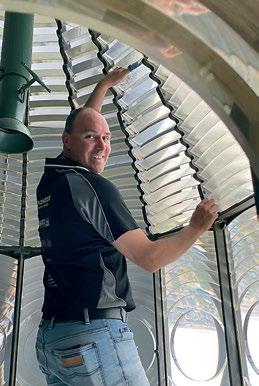

In all houses, cleaning must be done. A lighthouse is no exception. During the past summer, the Cape Jaffa Lighthouse needed its lens cleaned and polished. The upper prisms on the dome of the apparatus were distinctly dusty, having last received attention in 2018.
Climbing up the helical staircase to the lantern room, then up a steep ladder to the internal catwalk, brought Kingston National Trust volunteers face-to-face with the First Order Holophotal Dioptric lens. All now irreplaceable, its prisms, with their golden hue and finely-cut edging, are held in a gunmetal frame. All together they weigh three and a half tons. When cleaned and polished, they sparkle and rainbows appear. It’s a truly beautiful sight and quite breathtaking. Polishing the lighthouse jewel is truly a labour of love.
In less than three hours, the job is completed and the lighthouse ready to receive visitors. Night tours are a keenly anticipated experience for both locals and visitors alike. Conducted eleven times a year, the tours take people straight up to the lens apparatus while it is alight and revolving, just as it did 150 years ago.
Climbing up into the lantern room, visitors hear the sound of the clockwork mechanism and watch as volunteers turn the handle to raise the weights. They see the 16 beams rotating like a cartwheel over Kingston and beyond. It’s as if they’ve stepped back in time! Close to a thousand people took guided tours of the Cape Jaffa Lighthouse during the past summer holiday season, with around three thousand going through each year. Our 20 guides devote their time to providing a memorable experience for visitors. Without exception, feelings of excitement, trepidation, determination and curiosity are replaced with relief, amazement, satisfaction and a sense of achievement by all who climb to the top. They are rewarded with a stunning view from the upper deck. Many more people could also enjoy the experience if it were accessible to them. In cooperation with the Kingston branch, the National Trust of South Australia has created an advanced concept plan to develop the site. It not only addresses the issue of accessibility, but with the inclusion of First Nations perspectives and stories, it will also take the whole lighthouse
experience to a new level. We are actively seeking government support to implement these improvements as part of what is dubbed the Kingston Beacon Project, which could see the lighthouse become a community hub and enhance the visitor experience for generations to come.
An award presented to the branch on Australia Day highlighted the tremendous contribution the lighthouse makes to the Kingston community and the diversity of engagement opportunities it already affords. Shine On Kingston!, an event which celebrated the 150th anniversary of the opening of the Cape Jaffa Light Station, received the Event of the Year Award from the Kingston District Council.
DATE/TIME: Dec 31, 2022, 6am
LOCATION: Cape Jaffa Lighthouse, Kingston SE

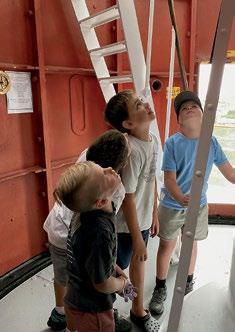
TASK: Clean 655 prisms of 150-year-old Crown Glass
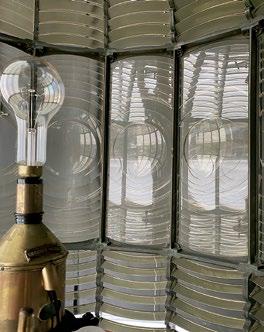

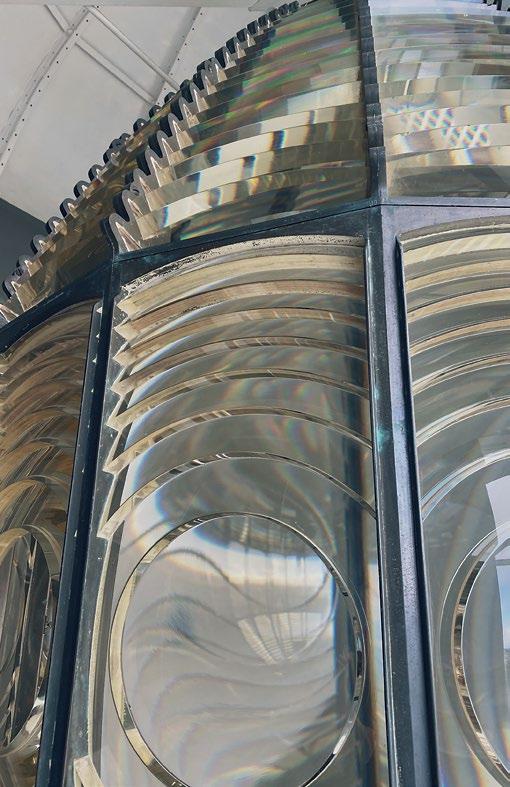
DURATION: 3 hours max.
PICTURED:
Where will your membership take you?

The next in our series exploring what’s on offer for National Trust members travelling overseas, through reciprocal arrangements with other heritage organisations belonging to INTO (International National Trusts Organisation).


A four-hour drive north of Auckland, the Northland region is one of Aotearoa New Zealand’s most significant historic areas. Beyond its beauty and temperate climate, it is home to many important early heritage places, including the Stone Store and Kemp House at Kerikeri Mission Station, and the Pompallier Mission and Printery, which are cared for by Heritage New Zealand Pouhere Taonga (formerly the New Zealand Historic Places Trust).
It’s an enchanting scene. Two of the country’s oldest colonial buildings sit nestled on a riverbank, surrounded by a heritage orchard and cottage garden. Peel back 200 years of history, however, and this site is anything but tranquil. Established in 1819 by the Church Missionary Society, the mission station marks the intersection of early MāoriPākehā contact, a hotbed of church intrigue and politics, and two decades of rapid-fire societal change that led to the signing of New Zealand’s founding document, the Treaty of Waitangi (Te Tiriti o Waitangi) in 1840.
Kerikeri was the society’s second settlement, founded under the protection of Ngāpuhi chief Hongi Hika, whose interest was in trade and muskets rather than eternal salvation. The missionaries came to save souls and change lives, but had to bide their time. Agendas alternately conflicted and converged; the ground kept shifting. Defying that sense of impermanence, the Stone Store was very much built for the long haul, using local basalt as well as Sydney sandstone for the arches and corners. The Georgian-style warehouse opened for business in 1836. It was variously used as a trading post, library, barracks, boys’ school, general store and post office before being purchased by the Trust in 1975 and extensively conserved. Standing nearby, Kemp House is a timber foil to its stone neighbour. New Zealand’s oldest surviving building, it was built in 1822 from native timbers by missionary carpenters and Māori sawyers for the Reverend John Butler. The Kemp family took up residence after Butler was put on a boat home. Tours explore the domestic and human side of its history, including stories about the people who lived and worked here, the influence missionaries had on the local iwi (Māori tribe) and how Māori utilised their presence.


About 40 kilometres further around the Bay of Islands at Russell (Kororāreka) is Pompallier Mission and Printery. From 1839, this was the hub of Catholic missionary work in New Zealand. Its printery produced almost 40,000 books, including prayer books in Māori language - an impressive feat which helped to develop literacy quickly. The two-storey building stands out among Russell’s colonial-era cottages and hotels. It was constructed in traditional Lyonnais style using rammed earth for the lower level, and timber framing and earth panels upstairs, topped with a graceful hipped roof broken by dormer windows. Wandering around this unique French foothold, travellers gain insight into the founding of the Catholic Church in Aotearoa, and the prestige and authority Pompallier held in the community, with Māori and Pākehā alike. Locals passionate about history act as guides. Depending on the time of year, visitors can work through the tanning process the brothers used in the printery, from dehairing the hides to softening the leather with the original hand-held tools, and then using it to bind books. Watch the mission’s restored printing press in action, before enjoying French pastries and a promenade through the gorgeous heritagelisted grounds, and their bright borders, fragrant hedges, fruit orchard and productive kitchen garden.
These are just two examples of places National Trust members can visit for free to experience the drama and delight of Aotearoa New Zealand’s unique heritage and culture.
What are you waiting for?
To help plan your visit, check out VisitHeritage.co.nz or access a short video by scanning the QR code opposite.

Being a member of The National Trust of South Australia gives people the satisfaction of knowing they are helping to preserve and promote South Australia’s natural and built heritage. It also offers benefits for members travelling interstate or overseas.
A NTSA membership card allows people to enter sites cared for by organisations that belong to INTO (International National Trusts Organisation), as part of a global reciprocal visiting scheme covering more than a thousand localities.
Free or discounted visiting rights have been negotiated as part of INTO’s mission to promote the conservation and enhancement of the heritage of all nations for the benefit of people around the world.
For a full picture of where your membership can take you, visit into.org/places/
POST COMPLETED
MEMBERSHIP FORM TO: National Trust of South Australia Memberships
PO Box 290 North Adelaide SA 5006
OR SCAN AND EMAIL TO: members@nationaltrustsa.org.au
OR CALL: (08) 8202 9200
JOIN OR RENEW ONLINE AT:
nationaltrust.org.au/membership-sa/
Our members are the lifeblood of the National Trust and we value your support. Your membership gives you free entry and discounts to National Trust properties across Australia and around the world. Signing up as a member is an easy way to show your support of the National Trust.
MEMBERSHIP CATEGORIES
1 year 3 years (save 10%)
Individual (One adult) $65 $176
Individual Senior
(One adult aged over 60 years) $60 $162
Individual Concession
(One concession card holder or full time student) $45 $122
Household (Two adults and up to 4 children under 18 years) $95 $257
Household Senior (Two adults aged over 60 years and up to 4 children under 18 years)
Household Concession
(Two concession card holders or full time students and up to 4 children under 18 years)
Conditions of membership
$85 $230
$75 $203
Concession memberships apply to Australian Pensioners, Concession cardholders, Healthcare cardholders, Disability Concession and full-time students. Memberships are not transferrable. Only the person named on the card may use it. Your current membership card must be presented to gain free or discounted entry.
NAME OF INDIVIDUAL OR FIRST HOUSEHOLD MEMBER
Mr/Mrs/Ms/Other: First name: Surname:
Address:
Phone: Home: Work: Mobile:
Email: Date of Birth: / /
Full Time Student or Pension Card Number (if applicable):
NAME OF SECOND HOUSEHOLD MEMBER
Mr/Mrs/Ms/Other: First name: Surname:
Email: Date of Birth: / /
Full Time Student or Pension Card Number (if applicable):
GIFT MEMBERSHIP ONLY Tick this box if you would like the gift membership gift pack to be posted to you at your address.
Mr/Mrs/Ms/Other: First name: Surname:
Address:
Phone: Home: Work: Mobile:
Email: Date of Birth: / /
Please affiliate my membership with my local branch (insert branch name)
COMPLETE SECTION BELOW IF RETURNING BY MAIL OR EMAIL
Enclose a cheque payable to National Trust of South Australia or complete the Credit Card details below.
Cardholder Name: Cardholder Signature:
Debit my Credit Card: Visa Mastercard Expiry Date:
Credit Card Number_ _ _ _ / _ _ _ _ / _ _ _ _ / _ _ _ _
COST OF MEMBERSHIP/S $
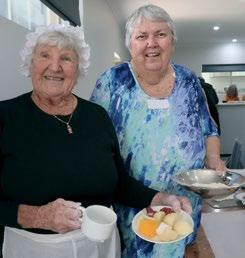

More than 30,000 people descended on the Copper Coast in May for the biennial Kernewek Lowender Festival, with this year’s event marking 50 years since the first festival was held to celebrate the region’s unique Cornish heritage, traditions and culture.

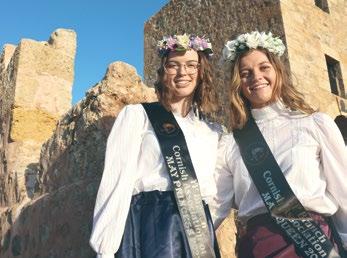
Kernewek Lowender means “Cornish happiness” in the Cornish language, and the Moonta Branch works hard to bring that meaning to life during the festival. Visitors are kept entertained and volunteers busy throughout the seven-day program, running the National Trust’s Moonta Mines tourist railway, museum, sweet shop, blacksmith and miner’s cottage.
A special display at the Moonta History Centre told the story of the Moonta Mines from 1861 to 1923, highlighting the family histories of people who lived in nearby Ballarat Row, as well as the mines’ infrastructure. Meanwhile, the National Trust’s unique road tram made two trips per day, taking people on rides through historic Moonta.

Traditional Cornish pasties took centre stage throughout the festival too. Branch volunteer June Ladner taught more than a hundred people the art of making them, using a recipe from her Cornish ancestors who lived and worked in the Moonta Mines. These classes were so popular that the National Trust has decided to make them a regular event outside festival time.
Pasties flew out of the oven at the popular Moonta Mines pasty cart. They were also the focus of a festival highlight –a celebrity bake-off, in which competitors were challenged to make a pasty and present it to the judges. Copper Coast Mayor Roslyn Talbot won the event this year, with a skilled display of pastry crimping giving her the edge.
Officially opening the festival, Governor of South Australia
Frances Adamson AC commented that no other festival in the world offered such diverse, authentic Cornish and mining-related activities in an area steeped in history, heritage and culture. “I am sure the original committee would never have envisaged the celebrations would grow in the way they have; or that over its 50-year history, the festival would bring well over one million people to explore the region,” she said.
PICTURED:
Adelaide Tours
Old Treasury & Tunnels
Journey through winding hallways and underground chambers to meet the colourful characters and explore the deep history behind one of Adelaide’s oldest colonial buildings. From riots to floods and historic reforms, the Treasury lay at the heart of South Australia’s political life. Come and explore its secrets and forgotten stories.
Sundays
Time: 1pm & 3pm
Cost: Adults $15, concession $13, NT members & children (aged 5–15) $10
*not recommended for children under 12
Place: Adina Treasury Hotel, 2 Flinders Street
Enquiries: bookings@nationaltrustsa.org.au or 8202 9200
Book online at: bit.ly/TreasuryTours
Z Ward: Behind the Walls
Neither prison nor hospital, the ‘criminal ward’ of the former Glenside Mental Hospital occupies a unique place in South Australia’s past. From the rare ‘Ha Ha Wall’ encircling the building to its striking 1880s polychromatic brickwork, explore the breath-taking architecture and sobering history of this important site.
Saturday 24 June, Saturday 8 July, Sunday 16 July
Time: 2pm
Cost: Adults $15, concession $13, NT members & children (aged 5–15) $10
*not recommended for children under 12
Place: via 63 Conyngham St, Glenside
Enquiries: bookings@nationaltrustsa.org.au or 8202 9200
Book online at: bit.ly/zward
Beaumont House Open Day
Beaumont House is a State Heritage-listed property built in 1849 for Augustus Short, the first Anglican Bishop of Adelaide. Later, it was the home of Sir Samuel Davenport, politician, horticulturist and pioneer of the olive oil industry in SA. The house has a distinctive Mediterranean character with an open brickwork parapet in soft terracotta colours and a central flat roof originally accessed by a staircase. Tour the house, wander through the beautiful gardens and olive grove, enjoy afternoon tea on the veranda overlooking the garden, city and gulf.
Sunday 2 July, Sunday 6 August, Sunday 3 September
Time: 2pm - 4:30pm, with tours every 20 minutes
Cost: Adults $15, concession $12, NT member $7 (including afternoon tea), afternoon teas $7, children under 16 free.
Payment upon entry
Place: 631 Glynburn Road, Beaumont Enquiries: burnside@nationaltrustsa.org.au or 0468 866 492
Book: Pay on the day at the door, cash or card accepted.
Cape Jaffa Lighthouse Tours
Originally built out to sea on the Margaret Brock Reef in 1872, this lighthouse became the first in Australia to be dismantled and relocated onshore. Come on a tour and learn more about its fascinating history and the keepers who tended it.
8 July – 23 July
Time: Daily on the hour, from 10am to 3pm. At all other times, please phone 0427 854 175 to book a tour.
Open Days at Stangate
Discover Stangate Garden, one of the Adelaide Hills’ best kept secrets.
Bring along provisions for a picnic and spend the day enjoying the tranquil garden setting.
Sunday 27 August
Time: 10am – 2pm
Cost: Adults $8, NT members and children under 15 free, Group of up to 4 people $20
Place: Stangate House and Garden, 3 Edgeware Road, Aldgate Enquiries: bookings@nationaltrustsa.org.au or 8202 9200 Pay at the gate or book online at: bit.ly/stangateopengarden
Camelia Society Open Days

The Camellia Society Adelaide Hills invites you to its September open days at Stangate Garden, which has been recognised by the International Camelia Society as a garden of excellence. Come and see the gardens in early Spring when the camellias are in full bloom.
Every Sunday in September
Time: 12pm – 4pm
Cost: $5
Place: Stangate House and Garden, 3 Edgeware Road, Aldgate Enquiries: For more information facebook.com/camelliasociety
Cost: Adults $15, children (aged 5-17) $7, NT members and children under 5 free Place: 32 Marine Parade, Kingston SE Enquiries: 0427 854 175 More information and bookings: capejaffalighthouse.org.au/tours/
Light On and Night Tours
Plan ahead for spring. See the First Order Holophotal Dioptric lens shining brightly from sunset, with night tours to the Lantern Room.
Sunday 1 October
Cost: Adult $20, children (aged 5-17) $10, under 5 free, NT members free Place: 32 Marine Parade, Kingston SE More information and bookings: capejaffalighthouse.org .au/tours or phone 0427 854 175
Bring your dog to explore new smells and have a woofing good time making new friends at this Heritage on Sunday event. Special treats and surprises will help make their day! Dogs are not allowed inside, but humans are welcome to explore the main building of twelve rooms, display pavilions, blacksmith, police cell and laundry, all in a beautiful garden setting. A sausage sizzle and Devonshire teas will be available, and the gift shop stocked with craft.
Sunday 18 June
Time: 11am – 4pm
Cost: Entry by gold coin Place: Tea Tree Gully Museum, 3 Perseverance Road, Tea Tree Gully Enquiries: 0431 080 062 or ttgmuseum.on.net
The Wonderful Land of Oz
A special school event at the Tea Tree Gully museum.
Enjoy the afternoon as you visit 12 rooms in the museum, 4 pavilions, blacksmith, police cell and laundry, all in a charming garden setting. Sausage sizzle available. Visit the gift shop for unique craft.
Wednesday 12 July and Saturday 15 July
Time: 10am – 2pm
Thursday 13 July, Friday 14 July and
Sunday 16 July
Time: 11am – 4pm
Cost: Entry by gold coin
Place: Tea Tree Gully Museum, 3 Perseverance Road, Tea Tree Gully Enquiries: 0431 080 062 or www.ttgmuseum.on.net
Moonta Branch
Moonta Mines Tourist Railway Departing from the platform adjacent to the Moonta Mines Museum, the Moonta Mines Tourist Railway is a guided tour of the historic Moonta Mines State Heritage Area, featuring extensive commentary. Passengers are taken past many historic landmarks of the former mining operations, including the reservoir, ore sorting floors, and through a tunnel in Ryans Tailings Heap.
Saturdays, Sundays, SA public holidays and school holidays
Time: 10.30am, 11.30am, 1pm and 2pm Wednesdays (non school holidays and public holidays)
Time: 2pm
Cost: Adults $12, children $5
Place: Verran Terrace, Moonta Mines, Moonta Please note: During extreme weather conditions the train will run at driver’s discretion (temp 37 C or over / very wet weather). Check with the Moonta Mines Tourist Office on the morning of your trip. Enquiries: Phone (08) 8825 1891 or email info@moontaheritage.com.au
Book: bit.ly/MoontaRailway
Relive gems of the Baroque period and explore new repertoire with this series of concerts performed by Adelaide Baroque
Theft and Tribute: Explorations 2
An exploration of the changing spirit of transcription through the ages, including much loved works by Vivaldi and Bach, and the premiere of Josh’s own Organ Sonata. Featuring organist Josh van Konkelenberg.
Sunday 23 July
Time: 3pm – 5pm
Cost: Adults $35, concession $30, students $10
Place: North Adelaide Baptist Church, 154 Tynte Street, North Adelaide Enquiries: To book Companion Card tickets or for specific access queries, contact Adelaide Baroque direct at ticketing@adelaidebaroque.com.au or phone 0410 914 764
Bookings: bit.ly/AdelaideBaroque
Celebrating Bach: Explorations 3
Johann Sebastian Bach’s six suites for solo cello are a much-loved staple in the repertoire for cellists and audiences alike. Following on from his enormously successful solo Bach program in 2021, Adelaide Baroque’s principal cellist, Thomas Marlin, performs the final three solo cello suites, aptly concluding with the sixth suite in D major, BWV 1012, which celebrates its 300th anniversary in 2023.
Sunday 20 August
Time: 3pm – 5pm
Cost: Adults $35, concession $30, students $10
Place: North Adelaide Baptist Church, 154 Tynte Street, North Adelaide Enquiries: To book Companion Card tickets or for specific access queries, contact Adelaide Baroque direct at ticketing@adelaidebaroque.com.au or phone 0410 914 764
Bookings: bit.ly/AdelaideBaroque
Two exhibitions are now on show in a new specialised art gallery space established by the Willunga Branch at historic Waverley Park Homestead. This exciting venture is bringing new life to a beloved heritage-listed building which has stood vacant for the past seven years.

Overlooking a picturesque setting with magnificent river red gums, the homestead was first owned by Thomas Smith Kell in the 1840s, and later by the Aldam and the Allen families. It is now owned by the City of Onkaparinga, which offered the branch a seven-year licence to operate the gallery. Curated by volunteers from the branch, the first two exhibitions opened in April and will run until late July.
The Jane Price Retrospective Exhibition features mainly watercolour paintings of heritage buildings and cultural landscapes by Jane Price (1933-2020). The local artist painted en plein air, largely in the McLaren Vale and Willunga area. Her daughter, Sarah Price, who is also a well-known artist, generously donated most of the paintings featured.
The other exhibition, Our District: Willunga’s Built Heritage Art, is based on the highly successful exhibition that ran at the Onkaparinga Art Centre in 2022. It aims to inspire, engage and educate visitors about the long and continuing tradition of artistic representations of heritage buildings, historic sites, cultural landscapes and past events in the Willunga District.
Waverley Park Homestead is located at 23 St Peters Terrace, Willunga. Enter by turning left into the Willunga Golf Course entrance, and look to the left when reaching the car park. The gallery is open each Friday, Saturday and Sunday from 1pm to 4pm. Admission is free.
For further information and to volunteer, email willunganationaltrust@gmail.com
PUBLISHER
National Trust of South Australia
North Adelaide Baptist Church
154 Tynte Street
North Adelaide SA 5006
T: 08 8202 9200
E: publications@nationaltrustsa.org.au
W: www.nationaltrust.org.au/sa
DESIGN
Dessein T: 08 9228 0661
E: tracy@dessein.com.au
DISTRIBUTION
Heritage Living is published four times a year.
PP 536155/0036
ISSN 0815-7871
FRONT COVER:
PRESIDENT
Mr Paul Leadbeter
VICE PRESIDENT
Ms Millie Nicholls
COUNCILLORS
Professor Brett Bowden
Mr Tully Brookes
Ms Elaine Davies
Ms Alice Fitch
Mr Christopher Guille
Mr James Harvey
Ms Gabrielle Iwanow
Mrs Caren Martin
Mr Mark Staniforth
Ms Alison Stillwell OAM
Ms Di Wilkins
NTSA STATE OFFICE TEAM
Stuart McNab
Chief Executive Officer
Leanne Plews
Executive Administrator
Lillian Brown
Administration Officer
Catherine Gawrysiuk
Membership Coordinator and Finance Officer
Charlie Gilchrist
Communications Officer
Alex Emmins
Natural Heritage Manager
James Guy
Regeneration Projects Officer
Christina Roberton
Administration Officer
Joanna Wells
Advocacy Coordinator
COUNCIL COMMITTEES
Audit, Finance and Governance Cultural Heritage Advisory Natural Heritage Advisory
Beerenberg Farm Bickfords Coopers Laucke Flour Mills
NTSA LOCAL BRANCHES (44)
Ardrossan, Auburn, Barmera, Beachport, Burnside, Burra, Ceduna, Central Yorke Peninsula, Clare, Cleve, Coromandel Valley, Gawler, Glencoe, Goolwa, Hahndorf, Jamestown, Kadina, Keith, Kingscote KI, Kingston SE, Koppio, Millicent, Minlaton, Moonta, Mount Barker, Mount Gambier, Naracoorte, Overland Corner, Penneshaw, Penola, Port of Adelaide, Port Elliot, Port Pirie, Renmark, Robe, Strathalbyn, Streaky Bay, Tea Tree Gully, Tumby Bay, Victor Harbor, Waikerie, Wallaroo, Whyalla Willunga.
Telephone (08) 8202 9200 or visit nationaltrust.org.au/sa for contact information.
PATRON IN CHIEF
Her Excellency the Honourable Frances Adamson AC Governor of South Australia
The National Trust of South Australia acknowledges its partners and supporters.
CIVIC PARTNERS
Adelaide City Council
GOVERNMENT RELATIONSHIPS
Australian Government
– Department of Climate Change, Energy, the Environment and Water
– National Library of Australia
South Australian Government
– Department for Environment and Water
– SA Water
– History Trust of South Australia

Piper Alderman
Stoneideas
Wines by Geoff Hardy
Heritage is not just about buildings and the natural environment, but culture too, including our food traditions. This recipe has been kindly provided by National Trust corporate partner Beerenberg Farm. The Beerenberg family has been farming at Hahndorf for six generations, diversifying into berry growing in 1969, when Grant and Carol Paech began selling their produce from a tin shed on the roadside.

Preparation time: 10 mins
Cooking time: Nil
Ingredients
1 cup almond meal
1 cup desiccated coconut
1 tablespoon tahini
3 tablespoons
Beerenberg Raspberry Jam
½ teaspoon vanilla extract

Serves: Makes 10 balls
Method
Place all of the ingredients in a large bowl, reserving one tablespoon of desiccated coconut. Using your hands, mix to combine and roll into 10 evensized balls. Place the remaining coconut in a small bowl. One at a time, roll the balls in the coconut until coated.
